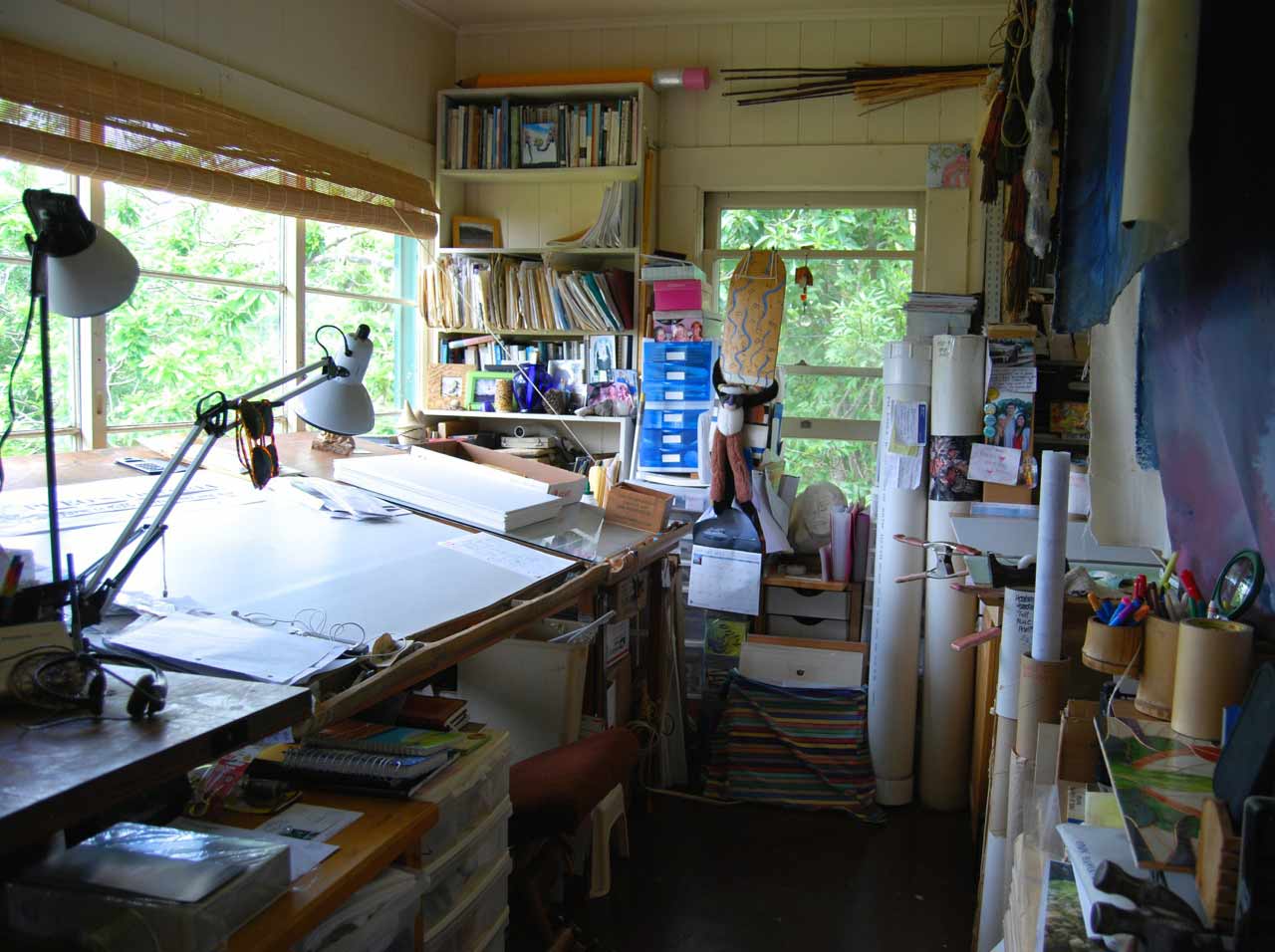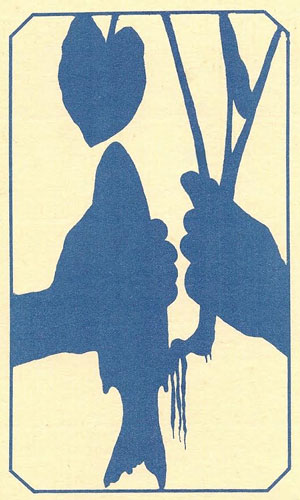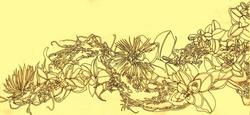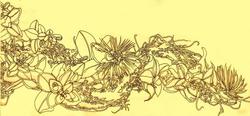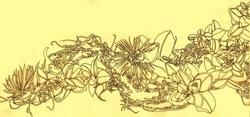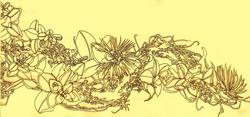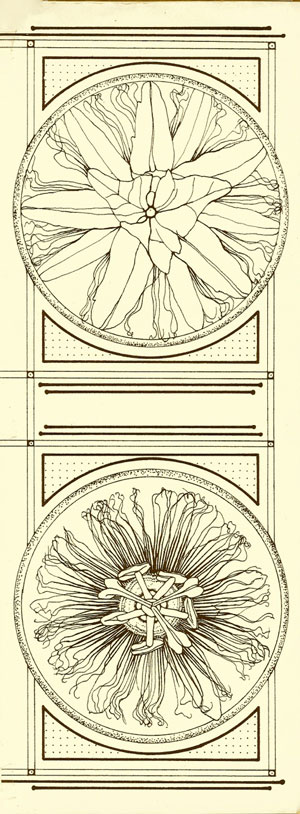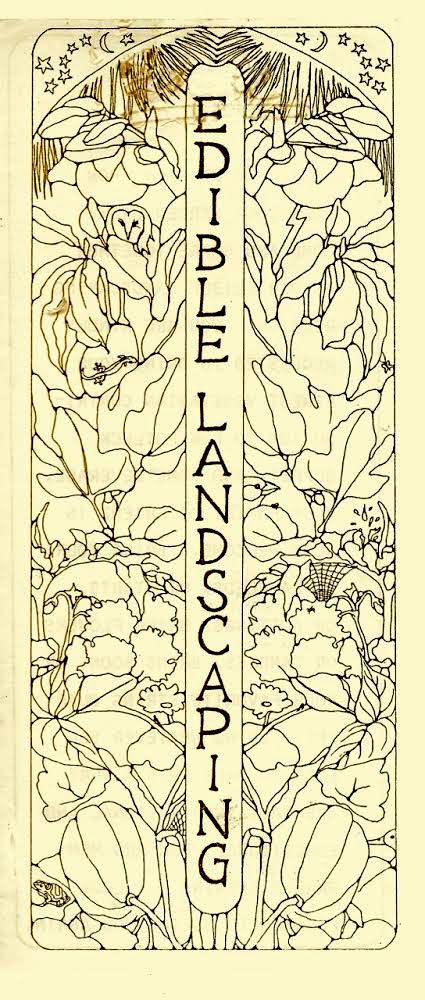Email: Calley@CalleyO'Neill.com
3. INITIAL CONSULTATION AND INTERVIEW OF THE STAKEHOLDERS:
This is best conducted on site whenever possible. After thoroughly familiarizing herself with the land, Calley begins with an interview of the primary decision makers and stakeholders, listening carefully to their desired design parameters, ideas, goals, visions, concerns, and suggestions. The landscape design must become a harmonious integration and reflection of your purpose.
- What will the primary functions of the landscape be?
- What are the feelings you want the landscape to evoke?
- What colors/color harmonies do you envision?
- Will there be predominantly native plants, edibles, perennials, semi-tropicals?
- What is the flavor and style you want to experience on the land?
- Zen peace?
- A lively gathering place?
- An efficient thoroughfare?
- A verdant living ecosystem?
- A dramatically simple xeriscape (dry land, drought tolerant landscape)?
- An intimate human scale?
- A more majestic monumental scale?
4. TIME LINE, CALENDAR and BUDGET:
TIME LINE, CALENDAR and BUDGET:
Working with the decision makers, Calley develops a preliminary timeline and budget for the design process, and the staged construction process.
5. COMMUNITY:
COMMUNITY:
After studying, discussing, and condensing the essential elements offered by the key decision makers, Calley meets individually with other key staff, and key community or ohana members as need and scale require.
6. COMMUNITY DESIGN CHARETTE:
COMMUNITY DESIGN CHARETTE:
Displaying a large site plan with buildings and existing landscape showing existing or proposed buildings, and existing landscape, Calley facilitates a participatory design charette with key leaders and community members, Through this brainstorming process, everyone who wishes to give input may do so freely. While participants are asked to keep their input clear, brief and to the point, no suggestions or ideas are countered or debated, only recorded. What may seem like someone's wacky idea can hold a thread of seeing into a new way of thinking about the land, or what the land or people want to express.
7. TRAFFIC PATTERNS:
TRAFFIC PATTERNS:
In each of the meetings, participants are asked to draw their projected paths on the land, by foot, bike and car, recording how they might be moving about during any given day or what they need to do in those locations: to sit down, to get water, to have relief from sitting down, to move and exercise, to talk a walk, to get some sun, to get to the office, to get to the restroom, to deliver something. Traffic and use patterns set the foundation for the flow of movement and meaning in the landscape and allow it to be created according to need, and not contrived to meet a designer’s ideas. The traffic patterns are usually done on acetate so they can be stacked up and registered as one gestalt. This will determine the primary pathways.
8. ACTUAL TRAFFIC AND USE PATTERNS ON THE LAND:
Using ropes, lime, or flour to outline the traffic flows or primary arteries, Calley often works with a team to draw the overriding repeating patterns noted above on the ground.
9. CONTEMPLATION:
CONTEMPLATION:
After discussing and condensing the essential elements, Calley pauses, meditates, and patiently allows the visions to evolve, and come forth from the silence: an amazingly efficient, reliable, and direct process. All true art, and all authentic, excellent, and meaningful design comes through the silence. The design is seen and felt, and the artist, as the hands of skill for the community, records it. No amount of forcing, trying, or contriving can substitute for the silent allowing of the design to come through the creative process. This is the essence of all timeless art and design. Copious preparation and community participation is the groundwork for these gifts of seeing.
10. ROUGH CONCEPTUAL DESIGN SKETCHES:
ROUGH CONCEPTUAL DESIGN SKETCHES:
Calley draws numerous thumbnail sketches in pencil, and selects those that most closely reflect the vision of the community, the spirit of the land, direct observation, and her keen design sense, for consideration and input by the key stakeholders. This constitutes the conceptual map of the primary use areas and concepts of the landscape.
11. INITIAL DETAILED ¼ - SCALE DRAFT:
INITIAL DETAILED ¼ - SCALE DRAFT:
Based on the response and first round of input, Calley creates a more detailed draft in pencil for presentation and the second round of input.
12. PLANT LIST and BUDGET:
PLANT LIST and BUDGET:
With the assistance of local nurserymen and landscapers, Calley prepares a plant list by landscape area, including the common name, botanical name, height, and in detailed master plans, the specific light, water and special soil needs, color, and function.
13. FINAL ¼ -SCALE DRAFT and INITIAL COMMUNITY PRESENTATION:
FINAL ¼ -SCALE DRAFT and INITIAL COMMUNITY PRESENTATION:
After distilling all the ideas, input, design work, and the decision makers responses, Calley presents a detailed pencil ¼ scale drawing for final approval before the time of input closes.
14. FULL COLOR MASTER PLAN:
FULL COLOR MASTER PLAN:
Calley completes the process with a bird’s eye view master plan and key frontal elevations, in water color, colored pencil, and fine black line. The bird’s eye view allows for ongoing interpretation of detail as plants reveal their attunement to the landscape placement and plant communities. The color master plan helps bring the potential to life, revealing all color harmonies and the overall feeling of harmony and well being that the landscape will foster. The color drawing will be archival in quality ~ a key asset for institutions and organizations in need of fundraising for the project. It shows the amount of purpose, preparation, research and potential in realizing the landscape in the ground.
15. COMMUNITY CONSTRUCTION OF THE LANDSCAPE:
COMMUNITY CONSTRUCTION OF THE LANDSCAPE:
With a community, ohana, or professional landscape team, Calley directs the interpretation and construction of the landscape, drawing on the ground with with ropes, string, flour or lime.
16. MAINTENANCE LOG:
MAINTENANCE LOG:
With the key team members, Calley will develop a list of maintenance duties.
CALLEY O'NEILL'S LANDSCAPE DESIGN PROCESS
1. THE GENIUS LOCI ~ SPIRIT OF THE LAND:
Calley begins the landscape design process by
- walking the land
- sitting and observing
- tuning in to the land through meditation, thereby opening to the genius loci
- observing and recording the land and light in minute detail
- recording the physical characteristics of the land
- mapping the cardinal directions and the arc of the sun
- photographing the land
2. ARCHEOLOGICAL REPORTS:
Calley is diligent about reading the available archeological reports on the land and its ahupua’a, (mauka to makai, mountain to ocean) and understanding the stories, symbols, and mythology associated with the land.
A. EXISTING LANDSCAPE FEATURES: Calley documents the topography, existing plantings, structures, roadways, paths, any existing landscape plans, problem areas, drainage pathways, permits, special use needs, and wildlife.
EXISTING LANDSCAPE FEATURES: Calley documents the topography, existing plantings, structures, roadways, paths, any existing landscape plans, problem areas, drainage pathways, permits, special use needs, and wildlife.
B. SOIL: Calley studies soil composition (or lack thereof on lava land), soil condition, permeability, and substrate. Soil samples are sent out for detailed analysis.
SOIL: Calley studies soil composition (or lack thereof on lava land), soil condition, permeability, and substrate. Soil samples are sent out for detailed analysis.
C. CLIMATE and WATER: Calley researches average annual rainfall, seasonal patterns, flood zones, storm water movement, erosion control and drainage, wastewater treatment, prevailing winds, and changing climatic conditions.
CLIMATE and WATER: Calley researches average annual rainfall, seasonal patterns, flood zones, storm water movement, erosion control and drainage, wastewater treatment, prevailing winds, and changing climatic conditions.
D. BEDROCK: Understanding the land's geological foundation.
BEDROCK: Understanding the land's geological foundation.
E. CULTURAL: In so far as possible, Calley meets with the Hawaiian elders who know the land and are willing to share what it was in the time of their ancestors, and the local history of the land.
CULTURAL: In so far as possible, Calley meets with the Hawaiian elders who know the land and are willing to share what it was in the time of their ancestors, and the local history of the land.
F. LIGHT: The path of sunlight on the land is drawn and noted, with existing shade patterns from buildings or trees.
LIGHT: The path of sunlight on the land is drawn and noted, with existing shade patterns from buildings or trees.
G. UTILITIES: Calley familiarizes herself with major utility lines.
UTILITIES: Calley familiarizes herself with major utility lines.
Art and Soul for the Earth
Big Island of Hawai'i



